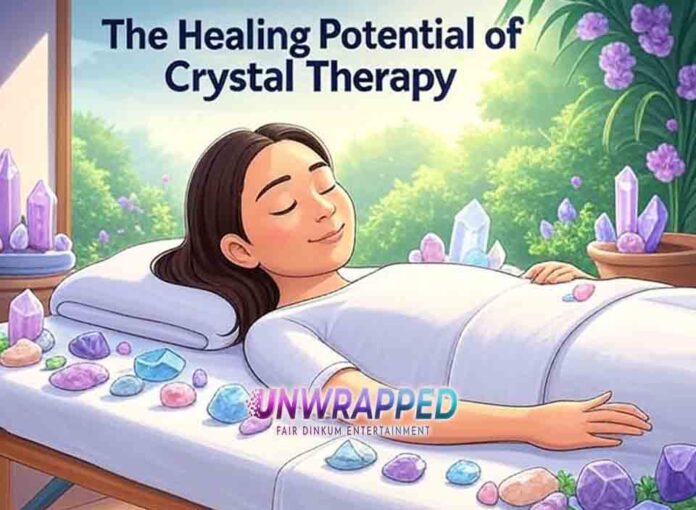Crystal therapy has surged in popularity as a holistic wellness trend, capturing attention with its promise of emotional balance, spiritual alignment, and subtle energy healing. From rose quartz used to open the heart chakra to black tourmaline believed to shield against negative influences, practitioners claim these natural gems offer profound support. Yet, science remains skeptical—many studies suggest that much of crystal therapy’s effect is rooted in the mind rather than the minerals themselves.
Despite academic doubts, millions find the ritual of cleansing crystals, setting intentions, and meditating with stones deeply comforting. The placebo effect—where belief alone triggers real psychological or even physiological benefits—plays a major role. This article explores both sides: the history, science, ritual methods, and mindful use of crystals as therapeutic tools.
The Ancient Roots of Crystal Healing
Crystals have been revered for millennia. Egyptian amulets and Mesopotamian lapidary medicine leveraged stones for protection and spiritual power. Chinese and Indian traditions tied gemstones to meridian points and chakras, embedding them in holistic healing for mental and physical well-being. These traditions remain the backbone of modern crystal therapy, which integrates them into New Age or integrative healing modalities.
What Modern Research Says About Crystal Healing
The Placebo Effect and Psychological Benefits
Experiments comparing real quartz crystals with look-alike fake stones revealed no measurable difference—participants who believed in the crystal’s power reported similar sensations of warmth, tingling, or calmness regardless of authenticity. When belief is strong, mind-body connection alone can foster real well-being.
The Role of Ritual and ‘Performance’
Ethnographic research emphasizes that the healing experience often comes from the ritual itself—how stones are chosen, placed, and the healer’s presence—rather than any inherent mineral property. The ceremony, mindset, and attention create an experience of calm and personal significance.
People Also Love: Tips for Developing a Restorative Evening Routine
Tiny Physical Effects: Piezoelectric Properties
Some quartz crystals generate minute electrical charges when pressed—known as the piezoelectric effect—utilized in devices like watches and microphones. However, these electrical properties are extremely weak and unlikely to produce meaningful effects in human tissue.
Why People Still Choose Crystal Therapy
Mindfulness & Meditation Aid
Integrating crystals into breathing exercises or visualizations can provide a physical anchor, enhancing focus and relaxation.Symbolic Support
Gems like amethyst (calm), rose quartz (love), and black tourmaline (grounding) offer visual reminders and intentional purpose.Stress Relief in Practice
Handling a smooth stone, or placing crystals nearby, offers tactile comfort akin to worry stones—a small but meaningful act of self-care.Community & Cultural Tradition
Shared use and educational rituals create a sense of belonging and tradition, sometimes filling gaps left by conventional healthcare.
How to Use Crystal Therapy Mindfully
Choosing the Right Stone
Intuition-driven selection: Choose stones you feel drawn to—color, texture, or meaning matter.
Common picks:
Clear Quartz for clarity
Amethyst for stress relief
Rose Quartz for emotional harmony
Black Tourmaline for protection
Cleansing and Charging
Popular methods include rinsing in water, smudging with sage, or leaving in sunlight or moonlight to remove absorbed energies.
Intention Setting
Hold a crystal briefly, visualize your healing intention (e.g., “calm me during work”), and anchor your focused mind to one symbol.
Meditation and Placement
Meditate holding the crystal or place it on specific chakra points.
Carry stones in pockets, wear as jewelry, or add to living spaces as visual reminders.
Combining with Proven Modalities
Pair with clinically supported methods—meditation, breathwork, therapy, or yoga—for maximum holistic benefit.
Another Must-Read: Is Social Media Sabotaging Your Sleep and Mental Health?
Caveats and Considerations
Lack of Scientific Evidence: No peer-reviewed trials confirm crystal healing’s direct medical effects.
Placebo Overpowering: While belief-driven benefits are real, they don’t substitute for diagnosis or treatment of physical or mental illness.
Ethical Mining Concerns: Crystal production can involve child labor and ecological damage. Purchasing responsibly matters.
Risk of Pseudoscience: Avoid overselling crystal effects—present them as complementary, not alternative to healthcare.
Call-to-Action
Interested in crystal therapy? Begin with a gentle, intention-driven practice: select a stone that resonates with you, cleanse it, set a meaningful intention, and hold it during a brief daily meditation. If it brings calm, continue. Share this article with a curious friend and subscribe for more articles on mindful and inclusive wellness practices.
Conclusion
Crystal therapy stands at the crossroads of ancient tradition, psychological insight, and wellness ritual. While science does not confirm mystical healing properties, the power of belief, ritual, and focus can foster real well-being. Used responsibly—as part of a broader self-care or mindfulness practice—crystals may act as tiny yet meaningful tools of personal empowerment. Ultimately, their true power isn’t magical, but rooted in attention, intention, and the human mind’s capacity to heal.
See Also: The Holistic Benefits of Dry Brushing for Your Body










